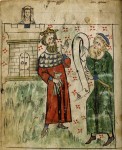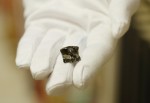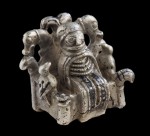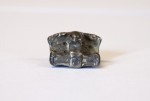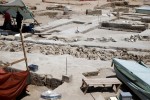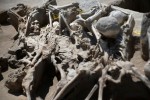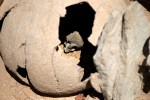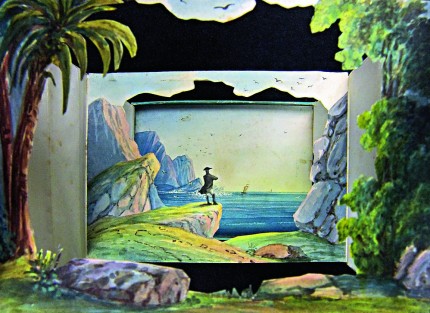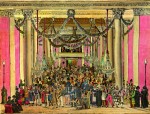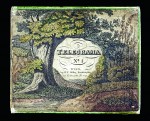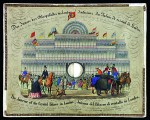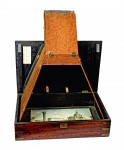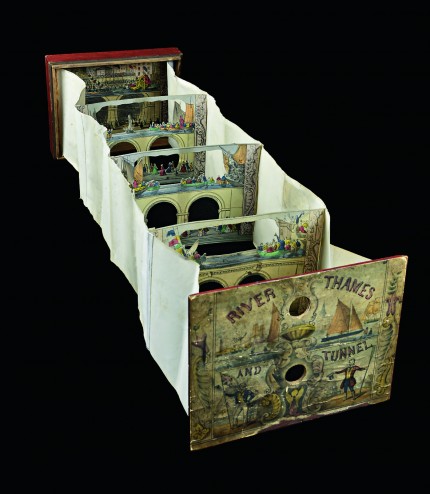 An iconic prehistoric carving of a person on skis has been irreparably damaged by two dumb kids who took a sharp object to it. The skier, part of a larger design known as Valentine Field which depicts a Stone Age hunting scene, was carved about 5,000 years ago on a rock face on the island of Tro off the coast of Nordland, northern
An iconic prehistoric carving of a person on skis has been irreparably damaged by two dumb kids who took a sharp object to it. The skier, part of a larger design known as Valentine Field which depicts a Stone Age hunting scene, was carved about 5,000 years ago on a rock face on the island of Tro off the coast of Nordland, northern 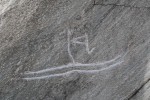 Norway. The carvings have weathered over the millennia, making them hard to see on the dry rock. The vandals thought they could fix that problem by scratching out the lines with a sharp stone or similar object. Then they did the same to the figure of a whale that is also part of Valentine Field.
Norway. The carvings have weathered over the millennia, making them hard to see on the dry rock. The vandals thought they could fix that problem by scratching out the lines with a sharp stone or similar object. Then they did the same to the figure of a whale that is also part of Valentine Field.
The vandalism was reported by one of the residents of a summer home on the island to Tor-Kristian Storvik, the Nordland County archaeologist, who immediately went to assess the damage. What he found was tragic.
“It’s a sad, sad story,” he said. “The new lines are both in and outside where the old marks had been. We will never again be able to experience these carvings again the way we have for the last 5,000 years.”
Experts will return to the site in September to study the skier and whale in depth and determine what, if anything, can be done to repair the damage, but as of now, there is little cause for optimism. The petroglyph appears to be irretrievably altered.
When the story broke, it made national and international news. The perpetrators, apparently chastened by the outraged reaction to their recklessness, confessed. They claim their intentions were good — to make the carvings more legible — and didn’t realize they were violating the law and every basic principle of how to interact with ancient and precious things. Their names and ages have not been released to the public.
Storvik has filed a police report on the vandalism and the boys could be criminally prosecuted as a violation of the Cultural Heritage Act, but no legal action has been taken as of yet. Bård Anders Langø, the mayor of Alstahaug, is discussing with county authorities how best to proceed. Apparently the boys are very young and remorseful, so it doesn’t seem likely at this point that they’ll have the book thrown at them. Last week they relayed an apology in a statement from the Alstahaug municipality.
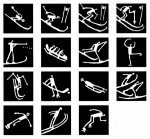 The image of the skier was the inspiration for the set of pictograms illustrating the sports of the 1994 Winter Olympics in Lillehammer. Each host city creates their own pictograms to identify events and venues by sport with an easily recognizable image. Mostly they look like very active versions of the signs on bathroom doors, but Lillehammer embraced its ancient heritage of winter sports and artist Sarah Rosenbaum created luges, hockey players and skaters that could easily have been carved on rock faces 5,000 years ago.
The image of the skier was the inspiration for the set of pictograms illustrating the sports of the 1994 Winter Olympics in Lillehammer. Each host city creates their own pictograms to identify events and venues by sport with an easily recognizable image. Mostly they look like very active versions of the signs on bathroom doors, but Lillehammer embraced its ancient heritage of winter sports and artist Sarah Rosenbaum created luges, hockey players and skaters that could easily have been carved on rock faces 5,000 years ago.



